Herb’s leaf curl can be a frustrating problem for gardeners and herb enthusiasts. However, there are natural and organic ways to effectively treat this issue without relying on harsh chemicals or pesticides. By understanding the causes of herbs leaf curl, such as environmental factors or pest infestations, you can prevent it from occurring in the first place.
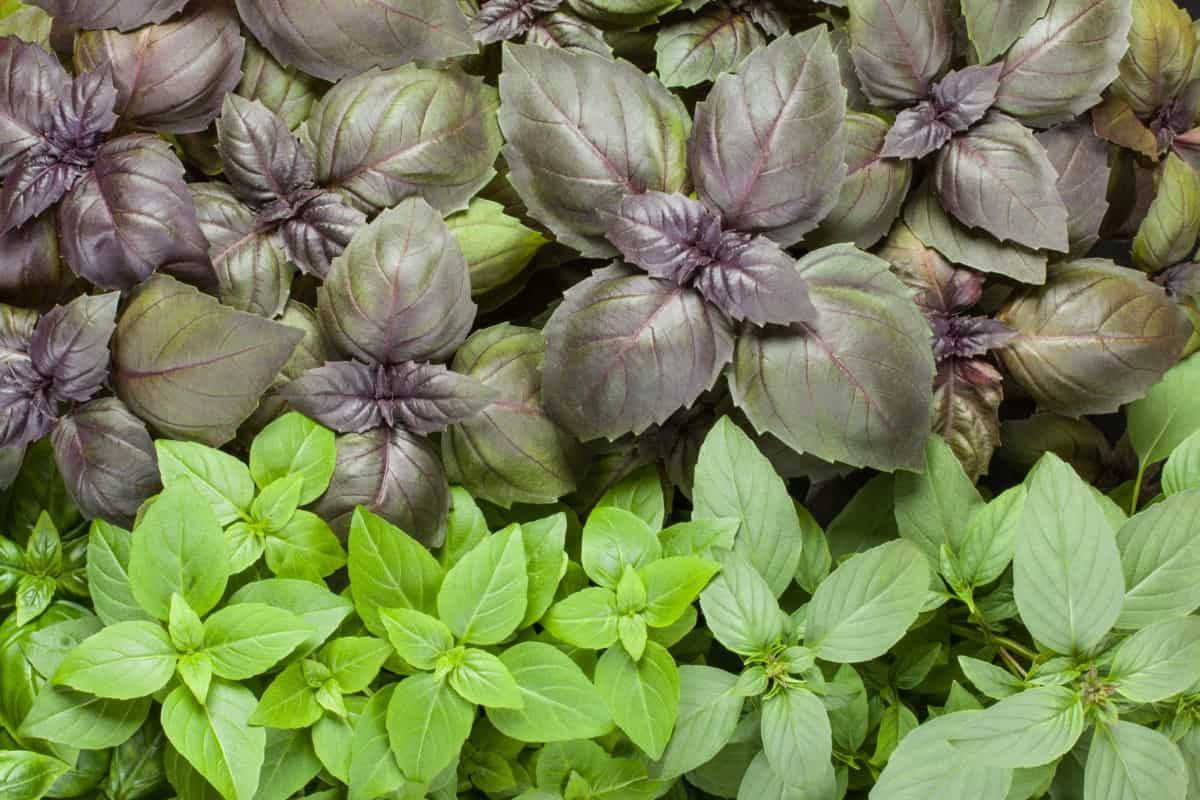
Ensuring that your herbs receive proper sunlight, water, and nutrition is essential for their overall health and resilience. With careful observation and timely action, you can keep your herbs thriving and free from leaf curl issues.
Natural and Organic Ways to Treat Herbs Leaf Curl
Organic Herb Leaf Curl Treatment
Many people prefer organic methods over chemical solutions when treating herb leaf curl. Organic treatments help restore the health of your herbs and ensure that no harmful chemicals are introduced into your garden or kitchen. Neem oil is a popular organic remedy for various plant diseases, including leaf curl.
It works by disrupting the life cycle of pests and inhibiting their ability to reproduce. Brewing compost tea using well-rotted organic matter provides essential nutrients to plants and helps boost their immune system against diseases like leaf curl. Chamomile tea has antimicrobial properties, making it an effective spray for controlling fungal infections leading to herb leaf curl.
Natural Remedies for Herb Leaf Curl
One effective natural remedy is applying a homemade Garlic spray. Garlic has antimicrobial properties that can help control fungal infections causing leaf curl. Crush a few Garlic cloves and mix them with water. Strain the mixture and spray it on the affected herbs. Furthermore, incorporating compost into your soil can improve its nutrient content and enhance plant vigor.
Healthy plants are less susceptible to leaf curl, so ensuring proper soil nutrition is crucial in preventing this issue. Regularly inspecting your herbs for any signs of pests or diseases will allow you to take prompt action if needed. Remember that these natural remedies may require repeated applications or adjustments depending on your situation. It’s important to monitor your plants closely and make necessary changes.
In case you missed it: 10 Common Herb Gardening Mistakes and How Every Beginner Should Avoid Them

Herb Leaf Curl Prevention Methods
Preventing herb leaf curl is crucial to maintaining healthy and thriving plants. Give your herbs enough room to grow by providing adequate spacing between each plant. This allows for better air circulation, reducing the chances of moisture buildup and fungal diseases. Apply organic mulch around your herbs to retain soil moisture and regulate temperature. This helps prevent plant stress, which can contribute to leaf curl.
Trim back any dead or diseased leaves from your herbs regularly to promote new growth and prevent the spread of pests or diseases. Ensure your herbs receive proper nutrients by fertilizing them with organic compost or natural fertilizers like fish emulsion or seaweed extract. Water your herbs deeply but infrequently, allowing the soil to dry out slightly between waterings. Overwatering can lead to root rot and increase the risk of leaf curl.
Organic Pest Management for Herb Leaf Curl
When dealing with pest issues in your herb garden, going the organic route is better for your plants and safer for you and the environment. Encouraging natural predators like ladybugs, lacewings, and parasitic wasps can help control pests such as aphids and mites. These helpful bugs feed on harmful pests, keeping their populations in check. Dilute the Neem oil with water according to instructions and spray it on affected plants to control pests like whiteflies, mealybugs, and spider mites.
Create a potent deterrent by blending crushed garlic cloves and chili peppers with water. Strain the mixture and apply it to your herbs’ foliage. The strong odor repels common garden pests without harming your plants. Certain plants have natural repellent properties that can deter pests from attacking nearby herbs prone to leaf curling. For example, marigolds attract beneficial insects while deterring nematodes.
Herb Leaf Curl Management Using Natural Methods
Herb leaf curl can be a frustrating problem for gardeners, but there are natural methods that can help manage and prevent this issue. By implementing these techniques, you can maintain the health and vitality of your herbs without relying on harmful chemicals or synthetic treatments. Proper pruning and maintenance are effective ways to manage herb leaf curl naturally.
Regularly checking your plants will help control the spread of leaf curl and improve air circulation around the plant, reducing the likelihood of fungal growth. Another natural method is to boost the overall health of your herbs by providing them with optimal growing conditions. Ensure they receive adequate sunlight, water, and well-draining soil.
A healthy plant is better equipped to resist diseases such as leaf curl. Companion planting is another technique that can aid in managing herb leaf curl naturally. Certain plants have properties that repel pests or attract beneficial insects like ladybugs or lacewings, which feed on aphids – common culprits behind herb leaf curl.
In case you missed it: Top 16 Perennial Herbs You Can Plant Once and Enjoy for Years
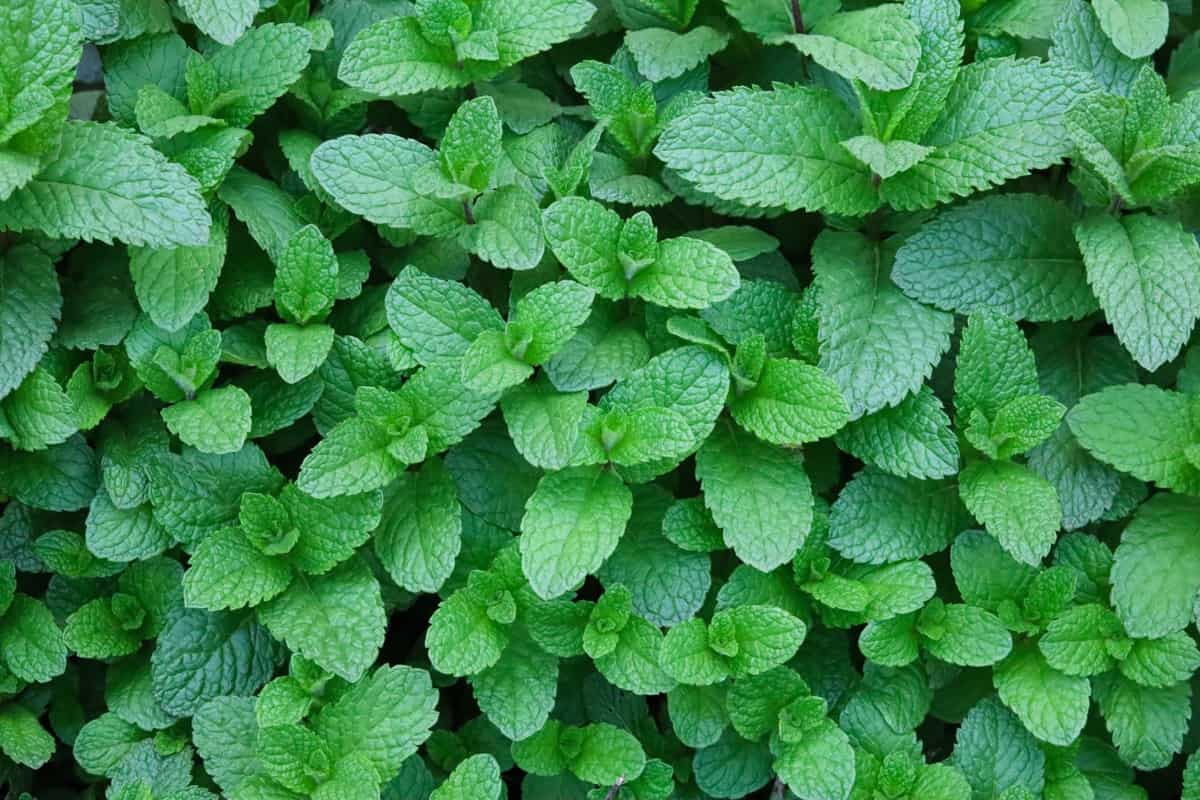
Planting marigolds or nasturtiums near your herbs can help deter pests and promote a more balanced ecosystem in your garden. Regularly monitoring moisture levels in the soil is crucial for preventing herb leaf curl caused by overwatering or underwatering. Ensure not to let the soil become too dry or overly saturated; aim for consistent moisture levels appropriate for each specific type of herb you’re growing.
Herb Leaf Curl Remedies from the Kitchen
One of the easiest homemade sprays of leaf curl is a mixture of water and dish soap. Dilute three drops of dish soap in a water-filled spray bottle. Shake it well, and then spray this solution on the affected leaves. The soap is a deterrent for pests that may be causing leaf curl. Another kitchen remedy involves using baking soda. Mix one teaspoon baking soda with one quart of water and add a few drops of liquid soap.
Spray this solution onto your herb plants, paying special attention to the curled leaves. Baking soda helps control fungal infections that could be contributing to leaf curl. Garlic is known for its pest-repelling properties. Crush several cloves and soak them overnight in mineral oil or vegetable oil.
Strain the garlic pieces and mix one tablespoon of this garlic-infused oil with one quart of water. Use this homemade insecticide by spraying it on your herbs every few weeks. Vinegar can also come to the rescue when dealing with herb leaf curl issues. Create a mixture using equal parts vinegar and water, then apply it directly onto the affected leaves using a soft cloth or sponge.
Herb Leaf Curl Treatment with Beneficial Insects
When it comes to treating herb leaf curl, nature truly does provide us with some incredible allies. Beneficial insects can be crucial in controlling pests that cause leaf curl and keeping our herbs healthy and thriving. One such beneficial insect is the ladybug. These little red beetles are known for their voracious appetite for aphids, a common pest responsible for herb leaf curl.
Ladybugs can help keep aphid populations in check, preventing them from causing further damage to your herbs. Another helpful insect is the lacewing. These delicate green insects feed on various garden pests, including aphids and mites, that can contribute to leaf curl. You can naturally control these harmful pests by attracting lacewings to your herb garden through flowering plants. Hoverflies are also valuable allies in the fight against herb leaf curl.
In case you missed it: Top 10 Fast-Growing Herbs You Can Grow from Seeds
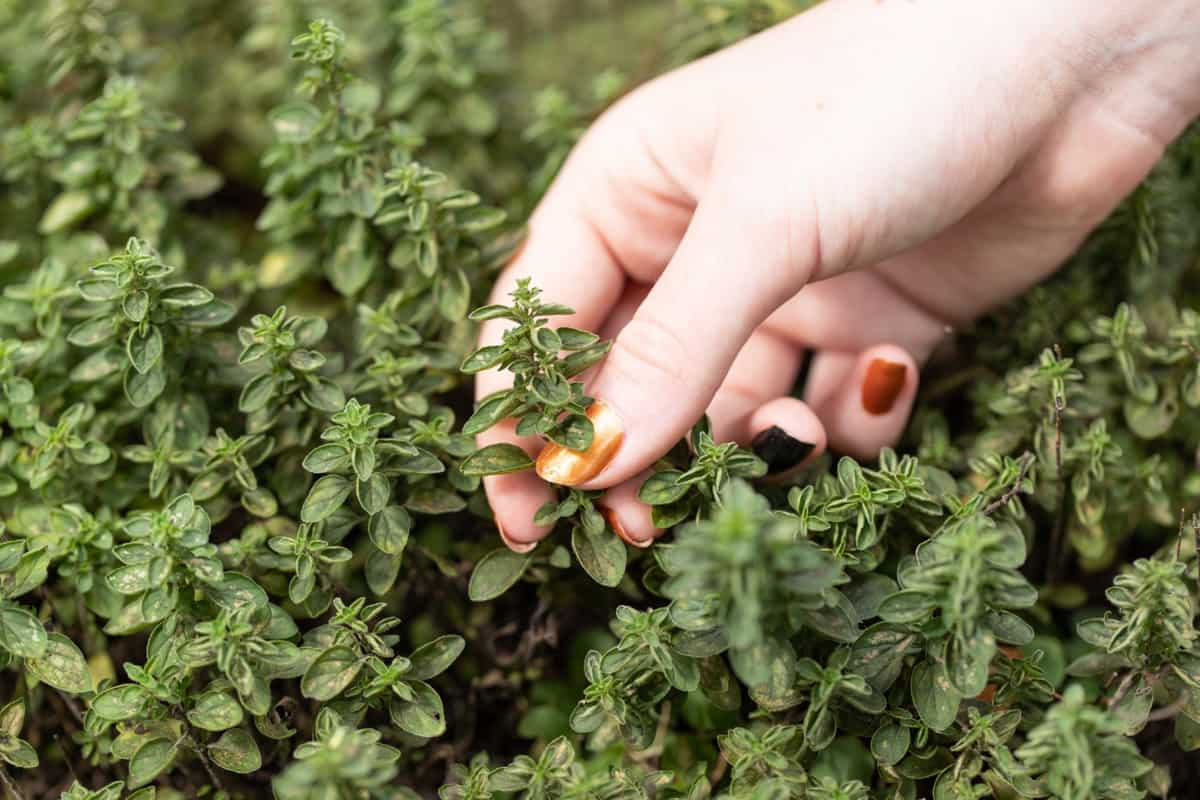
The larvae of hoverflies prey upon aphids and other soft-bodied insects that attack our precious herbs. You can attract these helpful creatures to your garden by planting flowers like Marigolds or Yarrow and keep damaging pests at bay. Using beneficial insects as part of an integrated pest management approach helps control herb leaf curl and reduces reliance on chemical pesticides. This promotes a healthier environment for ourselves and the natural world.
Herb Leaf Curl Prevention Through Soil Management
It’s important to ensure that your soil has good drainage. Poorly draining soil can lead to waterlogged roots, which can cause leaf curl. Add organic matter to your soil to improve drainage. In addition to improving drainage, maintaining a balanced pH level is crucial for healthy plants. Most herbs prefer a slightly acidic to neutral pH range (around 6-7). You can adjust the pH by adding amendments like lime or sulfur if necessary.
Another aspect of soil management is providing adequate nutrients for your herbs. Nutrient deficiencies can weaken plants and make them more susceptible to leaf curl disease. Regularly fertilizing with organic options like compost tea or fish emulsion can help provide essential nutrients without harming beneficial microorganisms in the soil.
Mulching around herb plants helps conserve moisture and aids in weed suppression and temperature regulation. A layer of mulch helps prevent excessive evaporation from the topsoil, ensuring that moisture reaches plant roots where it’s needed most. Practicing crop rotation is another effective method for preventing herb leaf curl through proper soil management. Avoid planting herbs from the same family in consecutive seasons, as this increases the likelihood of disease buildup in the soil over time.
Herb Leaf Curl Control Using Companion Planting
Companion planting is a natural and effective method to control herb leaf curl. By strategically placing certain plants together, you can create a harmonious environment that deters pests and promotes healthy growth. One popular companion plant for herbs is the Marigold. Its strong scent repels many common pests, including aphids and whiteflies, known culprits of herb leaf curl. Planting Marigolds around your herbs creates a protective barrier against these unwanted visitors.
In case you missed it: Secret Tips to Create the Most Fragrant/Aromatic Herb Garden
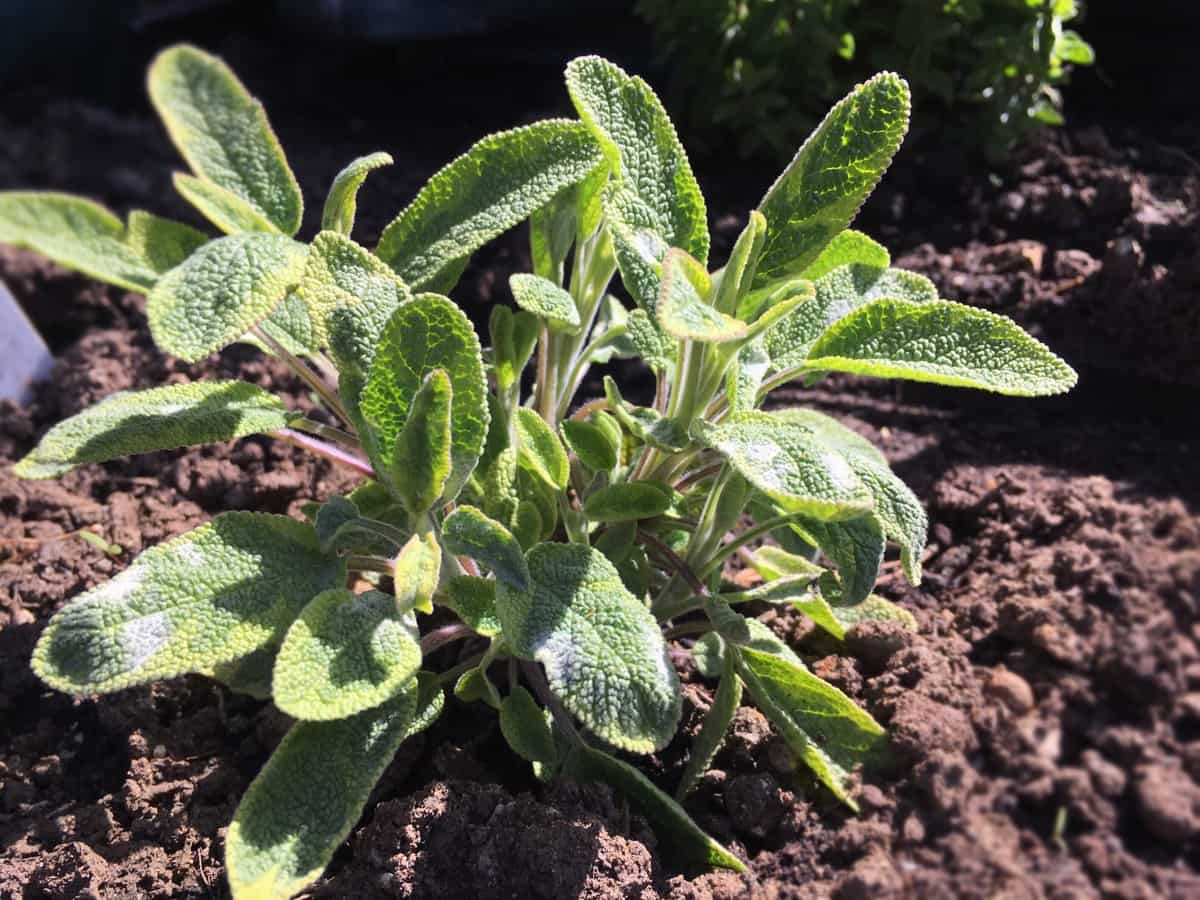
Another great companion plant option is Basil. Not only does it add flavor to your dishes, but it also helps repel insects like thrips and spider mites that can cause leaf curl in herbs. Interspersing Basil plants in your herb garden will help keep these pests at bay. Additionally, Chives are excellent companions for herbs as they attract beneficial insects. These helpful bugs prey on aphids and other harmful pests contributing to leaf curl. Including Chives in your herb garden encourages the presence of these natural predators.
Herb Leaf Curl Management Through Proper Watering Techniques
Proper watering techniques play a crucial role in managing herb leaf curl. Overwatering or underwatering can lead to stress on the plants, making them more susceptible to leaf curl and other diseases. Instead of frequent shallow watering, it is best to water deeply once or twice weekly. This encourages the roots to grow deeper, making the plant more resilient.
Applying organic mulch around your herbs helps retain moisture in the soil and prevents evaporation. It also regulates soil temperature and reduces weed growth. Avoid wetting the leaves when watering your herbs, as this can increase humidity levels and promote fungal growth. Instead, direct water at the base of the plant to reach its roots directly.
Use soaker hoses or drip irrigation. These methods deliver water slowly to the root zone, minimizing water wastage and reducing disease risks associated with overhead sprinklers. Regularly check the moisture level of your herb’s root zone by sticking your finger into the soil up to 2 inches deep. If it feels dry at that depth, it’s time to water again. Remember that every herb has different watering needs, so understanding their specific requirements is essential for successfully managing leaf curl issues due to improper watering techniques.
In case you missed it: How to Grow and Care for Epazote Herb in Your Garden
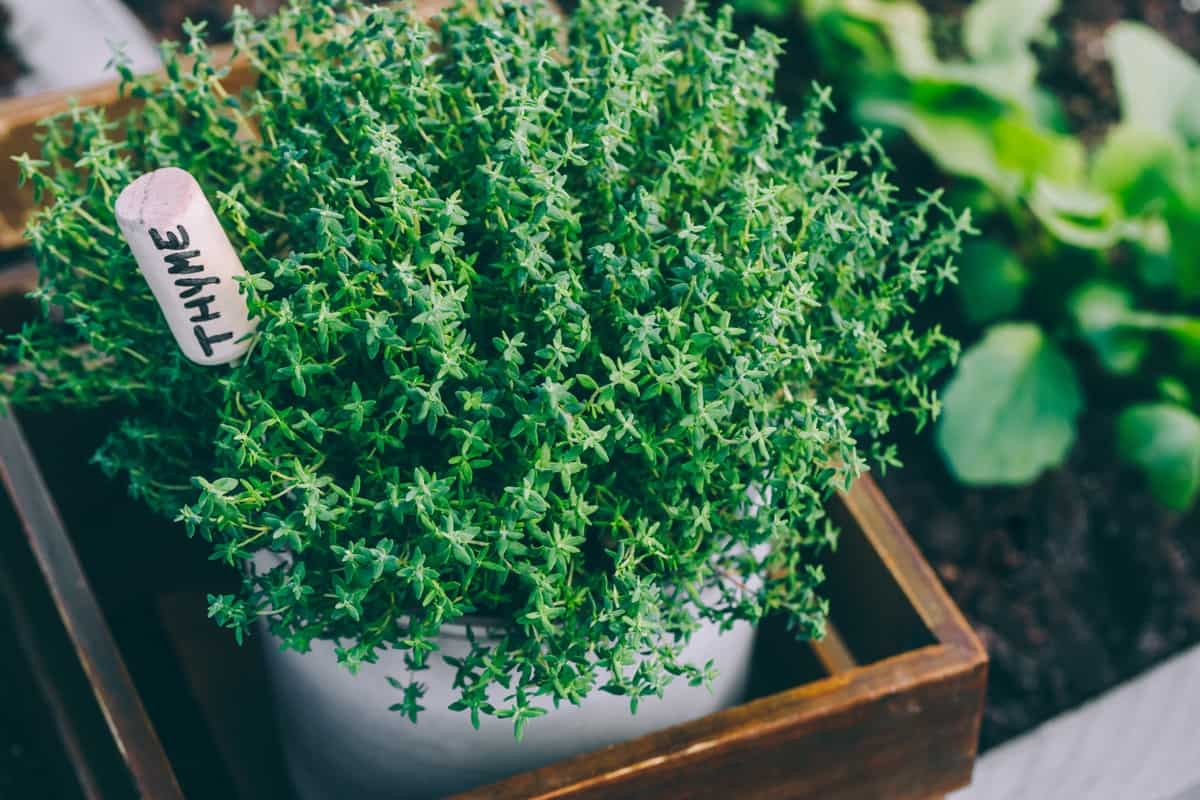
Conclusion
Leaf curl is a common issue that many herb gardeners face. It can be caused by various factors such as environmental conditions, pests, and diseases. However, with proper care and attention, it can be prevented and treated effectively using natural and organic methods. Remember to provide your herbs with the right amount of sunlight, water them adequately but avoid overwatering, and watch for any signs of pests or diseases.
If you do notice any leaf curl symptoms in your herbs, don’t panic. There are several home remedies you can try to restore their health. A holistic approach to caring for your herb garden will prevent leaf curl and promote overall plant health. By incorporating natural remedies into your gardening routine and staying vigilant against potential threats, you can enjoy flourishing herbs all year round.
- Seasonal Flower Gardening: Best Practices for Spring, Summer, Fall, and Winter
- How to Grow Hibiscus from Flower
- Plantation Ideas for Home Decoration: A Beginners Guide
- Flower Garden Designs and Layouts for Beginners
- Planting and Spacing Techniques in Papaya: A Beginner’s Guide
- Growing Gold: Essential Techniques for Planting Pineapples
- How to Make Kalanchoe Plant Bushy: Home Remedies and Solutions
- 11 Reasons Why Your Gardenia is Not Blooming: Home Remedies and Solutions
- Eco Elegance: The Guide to Designing a Drought-Tolerant Landscape